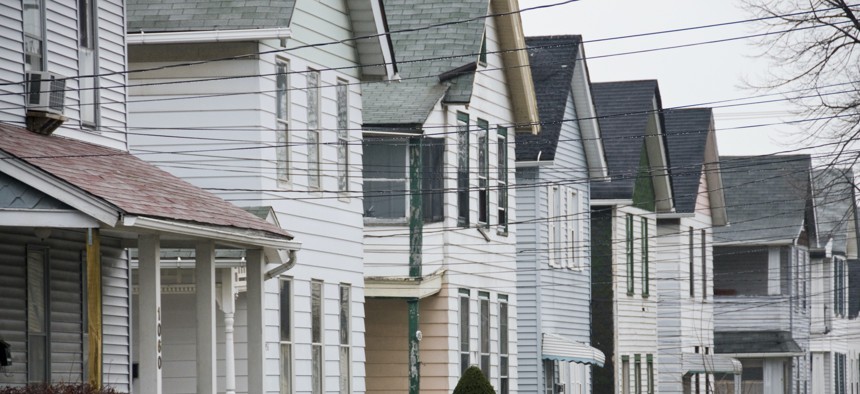Middle-income and Frontline Workers Struggle to Find Affordable Housing

Line of houses on a street in a Cleveland, Ohio neighborhood. iStock.com/magnetcreative
The pandemic has exacerbated the crisis for these households being able to buy and rent homes, according to a report by the Urban Land Institute.
Covid-19 has increased the difficulty of middle-income households' ability to find attainable homes, with frontline workers facing the most trouble, according to an Urban Land Institute report.
The study identifies gaps in home attainability across the U.S., and highlights occupations that have been affected because of the Covid-19 pandemic. According to ULI, the occupations fell into three broad categories that could face heightened home-affordability risks: health care workers, frontline workers and workers with an elevated risk of income disruption.
The analysis shows the severest housing cost burdens among middle-income households are mainly in the most populous regions, while there is a national struggle for lower-income households to find attainable rental units.
ULI’s data also points out a nationwide lack of attainable homes that is not limited to the most vibrant metropolitan economies. Plus, segregation – both by income and race – cuts across market types and geographies, and high housing costs threaten to worsen racial and socioeconomic disparities, the organization says.
Among cities that are relatively affordable, there were nine in which strong home affordability may be canceled out due to equity-related measures: Toledo, Cincinnati and Cleveland, Ohio; Birmingham, Alabama; St. Louis, Scranton, Pennsylvania; Louisville, and Charlotte and Winston-Salem, North Carolina.
On the other hand, the study points to nine metro areas that have struggled with affordability, but performed comparatively well on most equity measures: San Diego, Los Angeles, Riverside and Stockton, California; Denver; Portland, Oregon; Colorado Springs, Colorado; Las Vegas; and Seattle.
Several policy solutions that can support frontline and economically disrupted workers are also highlighted in the report. They included maintaining eviction protections, ongoing rental assistance for low-income households, policies and funding streams for deferred rent and mortgage payments, and capital to maintain and preserve low-income housing stock.
“Patterns of housing insecurity and racial and socioeconomic inequality that existed prior to Covid-19 have been exacerbated by the pandemic and the associated economic downturn,” said Michael A. Spotts, author of the report and a visiting research fellow with the ULI Terwilliger Center for Housing. “We are staring in the face of a situation in which many of the people who were critical in getting the population at large through this crisis face years of economic uncertainty and hardship as the country recovers.
To see more details on ULI’s 2021 Home Attainability Index click here.
Brent Woodie is an associate editor at Route Fifty.
NEXT STORY: Garbage Truck Driver Shortage is Creating a Mess for Solid Waste Agencies





